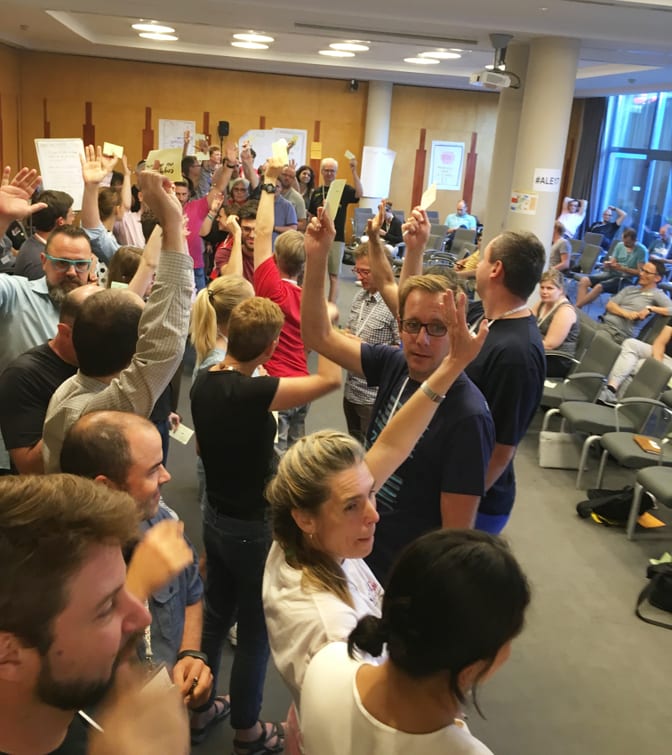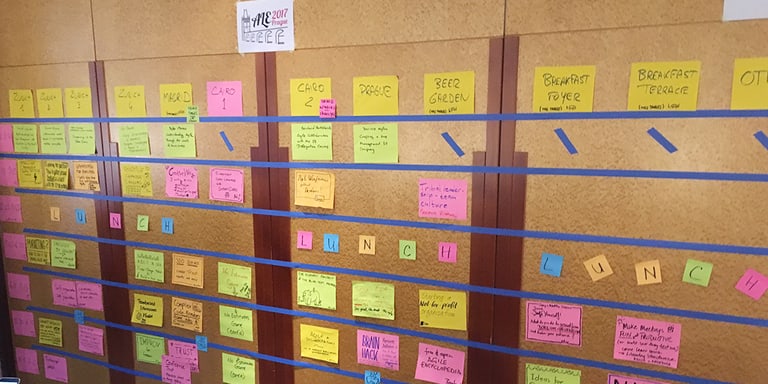Before my departure, I needed inspiration and renewed energy
When I signed up for ALE earlier this year, all I knew about this event was the format. In fact, at Liip we are having an un-conference every year – an intense time of exchanges across our five offices – and I already loved the way it enables freedom and co-creation.
Furthermore, I had been practicing the Scrum Master role for three years, mostly learning by doing, and I felt it was time for me to go « drink from the well ». I needed inspiration, renewed energy, and the least I can say is that I got more than what I was hoping for.
Each of us contributed to create the content
What makes an un-conference work so well (when well organized and facilitated of course) is the « Open Space » format it relies on. In a nutshell:
- The audience literally creates the content. At the beginning of each day, dozens of participants come to the front and pitch their ideas for sessions. Many rooms and spaces are made available in parallel, which allows the creation of a dynamic « programme wall ». Through each the day, every attendee can then pick workshops according to his own interests.
- Everyone is empowered to make use of the « Law of Two Feet », that is: if you ever feel you do not contribute to or learn from the session you’re in, you are free and encouraged to walk out (while minimizing disturbance, that goes without saying) and find another session that you could benefit more to and from.
It all creates a very spontaneous and lively atmosphere. You can really tell that the un-conference concept was invented by people who felt that the best moment in conferences was the coffee breaks. So much happens on-the-spot. And you really have no idea where a day will take you.
There was so much to learn from!
The event was packed with very interesting sessions. Here’s a sample:
FeatureBan with Markus Wissekal
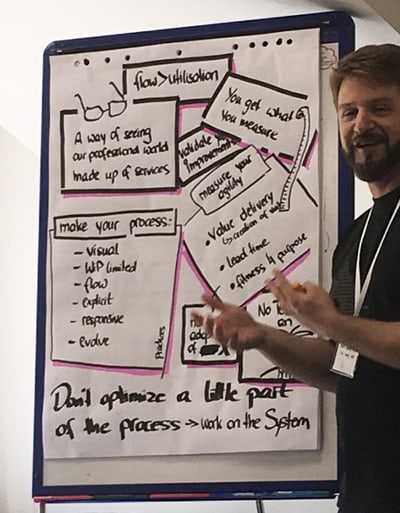
As Scrum Master of a support-oriented team, where operational flow is especially crucial, I knew I had to attend this one. Markus Wissekal, Scrum & Kanban coach, gave us a thorough refresher on the theory of Kanban, with examples from a real-life system, followed by a hands-on game to get a feel of how it works, and most importantly why it works that way. Attendees also got a chance to ask practical questions. Some of them received very strict answers, for example: « Should we keep in a column the tasks that have been postponed by the client? » « No! Everything that can not be delivered is waste, and it pollutes the system. »
Appreciative Agile with Susanne Taylor
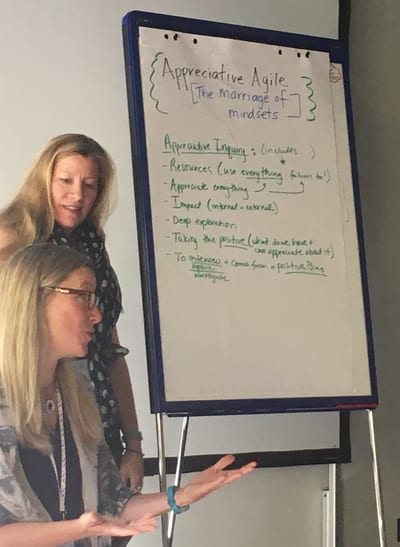
Suzanne Taylor works with teams to help them maximize flow and foster collaboration. Her research led her to consider a possible bridge between Appreciative Inquiry and the daily practice of Agility. The core of Appreciative Inquiry is to see value in anything that may happen (including failure), to build upon what already works, and start any discussion upon a « positive bias », that is: suspend disbelief at least until an idea has received enough time to be fully expressed. Isn’t that we all do as Scrum Masters when we facilitate a retrospective? Indeed, if as agile practitioners we do not believe in the possibility of developing and improving the positive things that are already there, how can we expect any success when leading a team in a Continuous Improvement process?
Vipassana with Pia Heinze
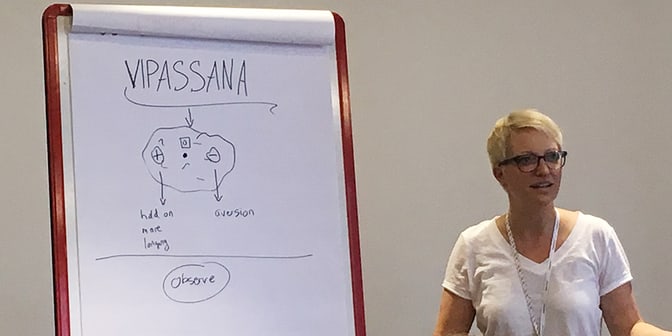
Agile practitioners are inherently change agents, and one can ask how you can change your (work) environment if you can not change your own self. That’s one of the reasons why Pia Heinze embarked on a very particular journey to get to know her own mental mechanisms, and change her relationship with her thoughts and emotions. Yes, we are talking about meditation. Ten days of it, cut off from any external stimulus. Even eye contact was to be avoided. Sitting down, eyes closed for essentially 10 days, Pia thought many times she was going crazy. But at the end of the process, she got to touch the notion of equanimity, that is: observe what happens without rushing to categorize it as either positive or negative (what we are trained to do since youth). Pia concludes: « I am even more emotional than before, but I am less reactive. ». She will take the Vipassa once again this year, bringing a friend along for the journey. «The brain? A great bullshit machine!».
A powerful conference that encouraged me to step out of my comfort zone
I also had loads of fun. The feeling of safety established by Silvana, the conference facilitator, was so powerful that there seemed to be no limit in trying things. The craziest was « Powerpoint Karaoke ». Yes, it is exactly what it seems and you can be scared. Unless you feel comfortable enough with the 40 persons who stayed after the day had wrapped for this unlikely session. I had to kick myself a bit to step up but that was a very liberating exercise. I improvised over 10 slides of 20 seconds each of a random deck found on the Internets. I had tears of laughter while watching others do the same.
Even more than the technique of practicing agility, these three days reminded me of the central importance of the relationship you share with your team. I got to experience how strangers become friends, thanks to safety, trust and listening. Those are the foundations. From that point on, it’s a kind of magic.
... By the way, the 2018 edition will take place in Zürich and my colleagues Christoph, Daniel and Leo are amongst the organizing team. Will I see you there?
